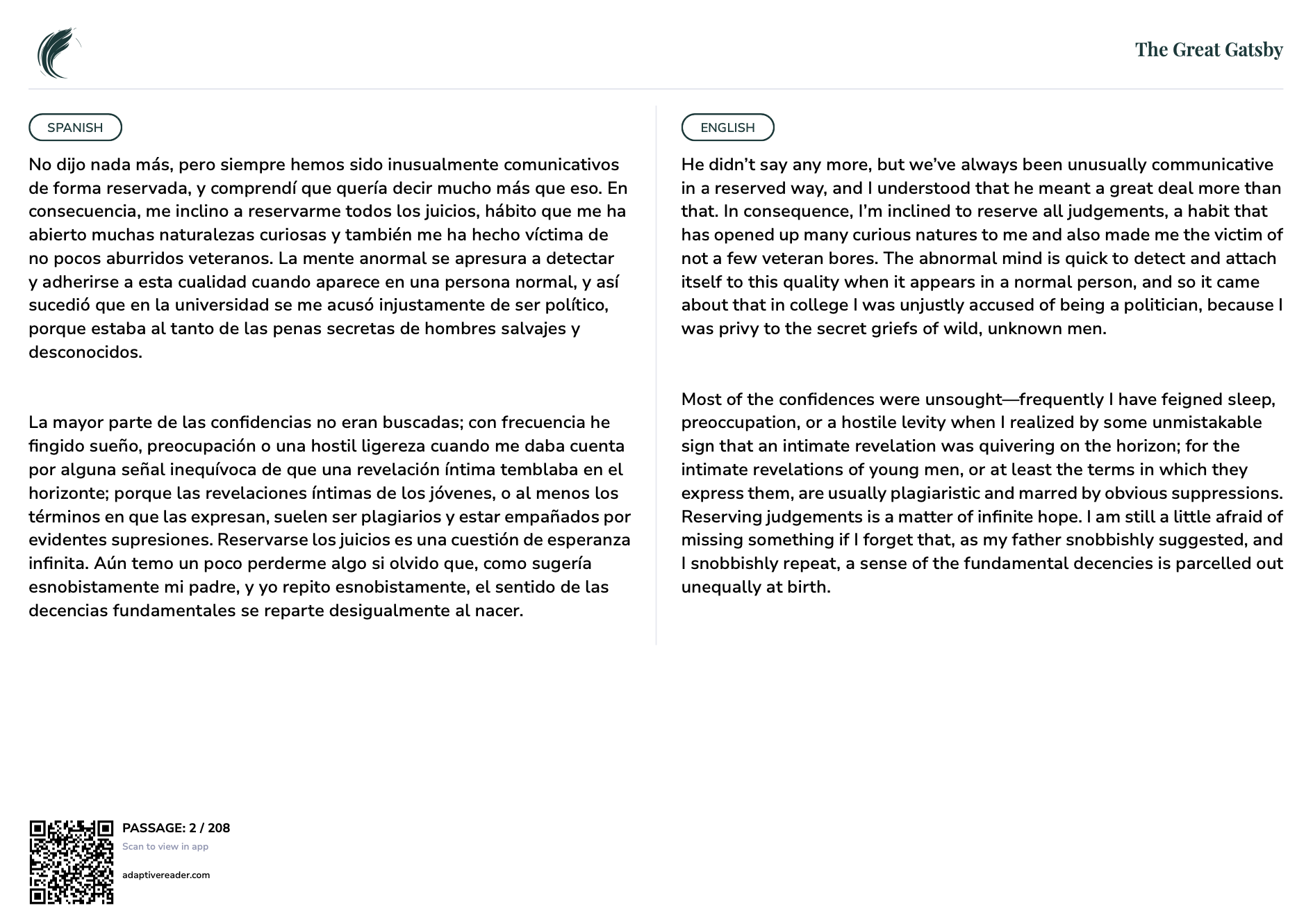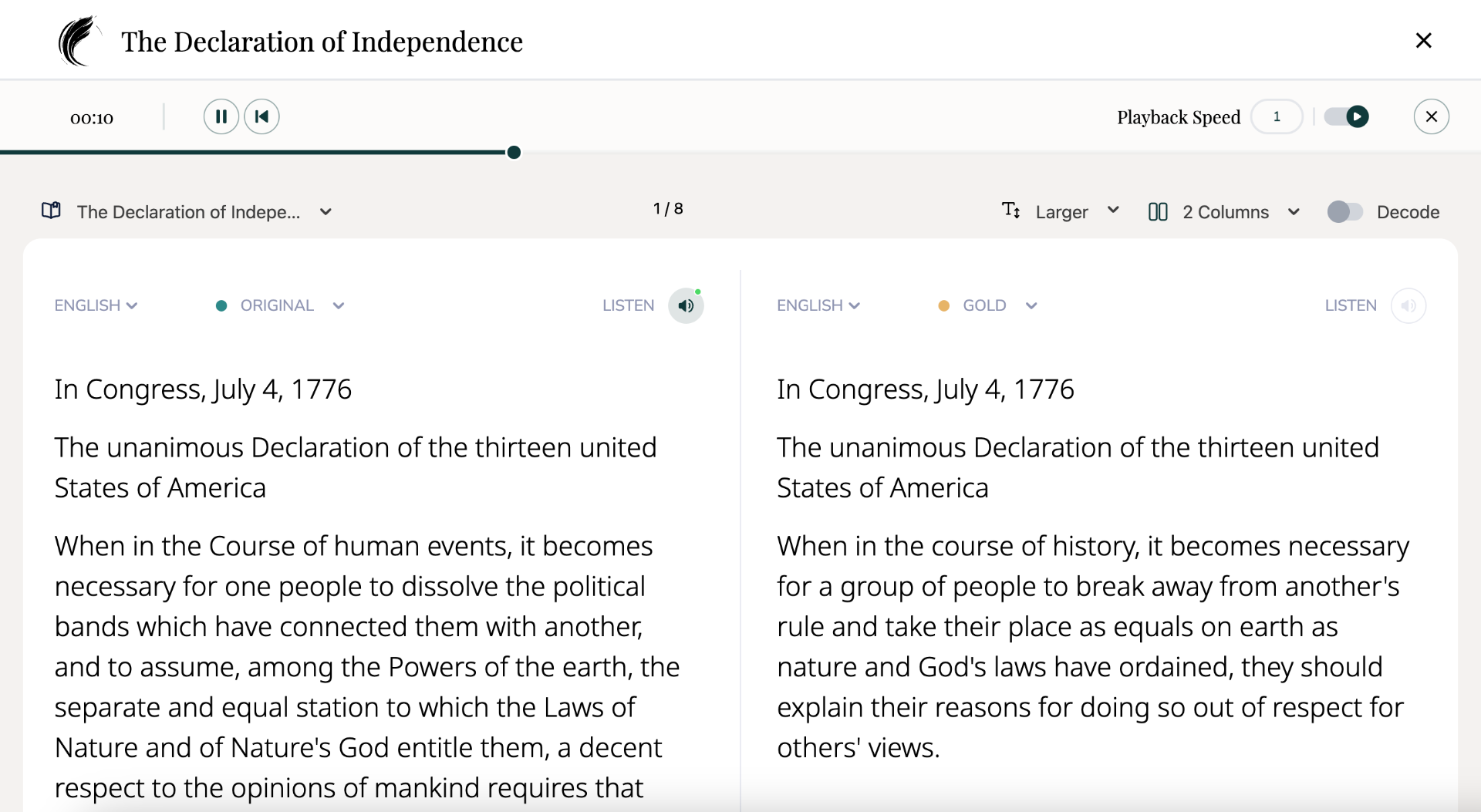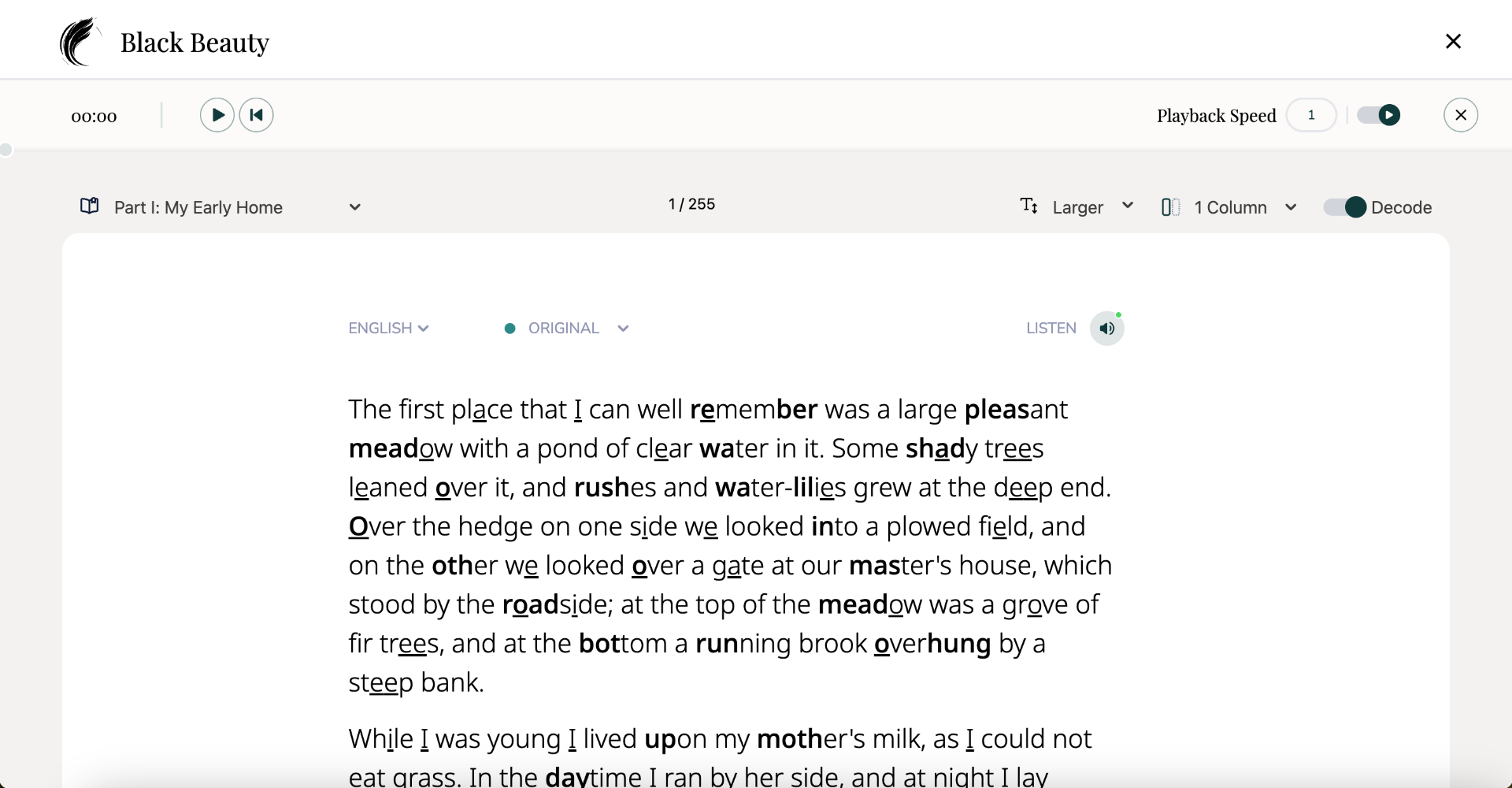Accessibility, Built In
Scaffolds that preserve dignity, support multilingual learners, and make grade-level content accessible to all.
From phonics to translations, Adaptive Reader equips every learner with built-in supports — in print or digital, no logins required.
Upload Any Text
Instantly adapt for every reader
Drop your document here or click to browse
Word, PDF, Google Docs, or plain text
Ready to Use
Available in all formats
Dual-Language Texts
Support multilingual learners with side-by-side translations that enable students to access grade-level content while building English proficiency and mastering core concepts.
30+ Supported Languages:
And 18 additional languages available

Real example showing English and Spanish side-by-side with QR code access

Declaration of Independence: Original text (left) and simplified version (right)
Reading Level Adaptation
Offer multiple versions of the same text, allowing students to access grade-level content at their personal reading level while preserving the core ideas and vocabulary.
Build Background Knowledge
Students develop conceptual understanding through accessible versions before tackling complex grade-level texts
Enable Independent Practice
Students can practice reading comprehension skills independently at their appropriate level without teacher intervention
Ground Whole Class Instruction
Teachers can conduct discussions and lessons using grade-level texts while ensuring all students understand the content
Decode Mode™ for Phonics Support
Our patented markup system with Noah Text® visually reinforces decoding patterns in both print and digital formats, helping students with dyslexia and emerging readers build confidence and reading fluency.
How Decode Mode™ Works
- 1
Visually highlights syllables, vowel patterns, and other key phonics elements
- 2
Helps students recognize patterns and decode unfamiliar words independently
- 3
Available in both print and digital formats for consistent learning support
Powered in part by Noah Text®, U.S. Patent No. 11,935,422. Used with permission.
Decode Mode™ in Action

Real example from "Black Beauty" showing syllable highlighting and phonics support
Audio Narration
High-quality human-like voiceovers
Audio Companions
High-quality read-alouds in English and other languages provide an auditory learning dimension, supporting fluency, comprehension, and dual-language learning.
Multiple Languages
Audio available in English and many other supported languages
Variable Speeds
Adjustable playback speed for different learning needs and abilities
Accessible Anywhere
Access audio via QR codes in print materials or digital platforms
Digitally Enabled Print
Combine the proven benefits of printed materials with seamless digital supports. Our platform creates enhanced print experiences that integrate audio, accessibility features, and multi-language support without requiring constant screen time.
Print Benefits Preserved
Physical materials improve comprehension, reduce eye strain, and provide tactile learning experiences that support retention.
Seamless Digital Integration
QR codes and magic links connect print materials to audio narration, digital versions, and additional supports when needed.
Custom Paperbacks & PDF Downloads
Order personalized paperback books or instantly download print-ready PDFs with all accessibility features included.
Custom Paperbacks
Personalized printed books
PDF Downloads
Instant print-ready files
Enhanced with Digital Supports
Audio, translations, and accessibility features
No Student Data Collection
Student privacy is protected with zero data collection
FERPA Compliant
Fully complies with all educational privacy regulations
Teacher Controlled
Educators maintain full control over all content access
Privacy-First Design
No student accounts. No personal data. Just access.
No Student Accounts Required
Students access materials through teacher-generated links and printed resources—no accounts, emails, or personal information needed.
Secure Access Controls
Teachers have complete control over who can access materials and for how long.
Educational Focus
Our platform prioritizes learning outcomes over data collection, allowing districts to comply with strict privacy regulations.
